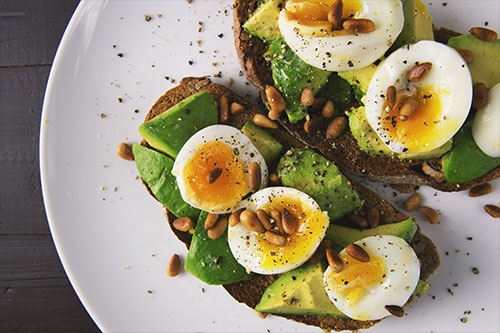
Which diet?
If you are looking to make a dietary change, it can be overwhelming to sift through all the “diets” out there. Paleo, Keto, Whole 30, Vegan, Vegetarian, Carnivore… the list goes on.
How do you know which one is right for you?
The key to a healthy meal plan is to start with improvements in what you are already eating. How do you do that? Start with keeping track of how you are eating to begin with. There are many ways to journal your food intake. Why should you journal? Well most of us, if asked what we ate yesterday would probably have trouble remembering what we ate, let alone if I asked you what you ate all week.
Another reason to journal is most of us underestimate how many calories we are actually consuming. To lose weight, typically you do need a caloric deficit. There are many journaling apps out there like MyFitnessPal, LoseIt, CarbManager, Healthtrac, or a simple notebook will do.
What is the make-up of your diet?
Once you have a clear picture of what and how much you are eating, the next step is to look at where there is room for improvement. You can now go beyond calories and look at your macronutrients. Depending on your medical conditions, the ratio of macronutrients may be important. This can also affect hunger levels. When someone tries to make a healthy meal plan that is high in carbohydrates, they might feel much hungrier than someone who is eating the same amount of calories, but more protein and fats.
This is due to the hormonal response to foods. Our body responds differently to 200 calories of broccoli than to 200 calories of cookies, right?
Any time we are cutting down on calories, we risk being hungry. What can help keep us full?
Foods with fiber, protein and fats help to keep us full and satisfied. Looking at your macronutrients can help identify areas of improvement in these food groups.
What should you cut out?
Another factor to consider when creating a healthy meal plan is to try to eliminate processed foods. What is the harm and what is considered processed? Anything that comes out of a box is processed on some level. If it was on a shelf and in a box, the chances it is a processed food product is much higher! Foods in the middle aisles of the grocery store like chips, cookies, baked goods, pasta, breads, cereal- are all in this category. Such foods result in a spike in blood sugar and insulin, leading to fat storage. They are also highly addictive.
Does this mean we need to never have processed food again? Is that realistic? No.
It does mean that if we are mostly eating “real food”, we can indulge occasionally in those highly addictive foods- but recognize that the sugar in these foods might keep you coming back for more!
What should you include?
When developing a healthy meal plan, try to include lots of vegetables, fruits, and when having carbohydrates like bread, tortillas, pasta, rice, grains- opt for a smaller serving size and choose those made of whole grains, beans, and lentils. Hint: read the food labels and look for fiber!
What we offer
When creating a meal plan for our patients, we not only take into account their likes and dislikes, but also their medical conditions- often this guides the macronutrient make up of their meal plan.
Often a dietary change is accompanied by needing to learn new cooking techniques like batch cooking, roasting, grilling, slow cooking and using a tool like the Instapot. Cooking healthy food does not need to be complicated, but it does require some effort! We guide our patients to resources to find recipes, how to stock your refrigerator and pantry with the right ingredients, and we even have a blog with recipes to give you ideas.
Outsource when needed
Also, a note- you need to be realistic. When life is busy, you don’t always have time to cook a healthy meal, but you can have your go-to foods that you can keep on hand in the freezer for those days. Examples are frozen seafood, frozen vegetables, vacuum packed beans, pre-cut salad mixes etc. When needed, there are also many great meal-delivery services available for busy families. Last, even when eating out at restaurants, if you have a mindful approach, you can make good choices and have the occasional indulgence too!
